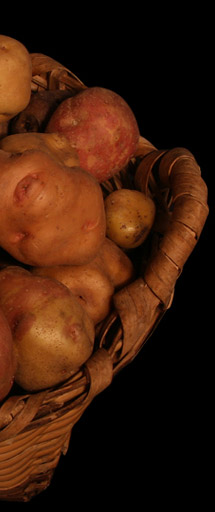
 |
 |
 |
Papa |
Origin The potato grew from Andes in South America, at highlands, next to the lake Titicaca, close to the present-day frontier among Peru and Bolivia. There it has been grown from more than 7000 years. Once domesticated, the potato spread over all the Andes and, when the Spaniards came at beginnings of the XVI century, the farmers grew hundred of varieties at the highlands (between 2000 and the 4000 metres of altitude) where today is Bolivia, Chile, Colombia, Ecuador and Peru. Also it was grown in Mexico, Guatemala, Venezuela and the north-west of Argentina. Peru and Bolivia own the bigger diversity of developed varieties, with a great variability, as in forms and colours of tubers, as in the characteristics of the plant and colours of the flower. The most ancient European cultures ( S tuberosum ssp andígena) came from the high zones of Peru and Colombia, with short day photoperiods. Varieties were adapted to long days of European summers, at crop season. The adaptation process produced a set of changes in the potato's morphology. This did not happen in the Canary Islands, where the descendants of andígena cultivars , brought direct from the Peru in 1622. Its morphology didn't change as it was cultivated under short days photoperiods. |
Arrival of the potato to the Canary Islands The exact arrival date of the potato to the Canary Islands is not known. Probably it was introduced direct from Peru or Colombia in the first years of the decade of 1,560, because in 1567 a Dutch vessel loaded potatoes in Las Palmas Gran Canaria heading Antwerp (Lobo-Cabrera, 1988): (reproduction of the note dated 24-4-1574 from the public notary Louis de Balboa) Source:
| ||
 |